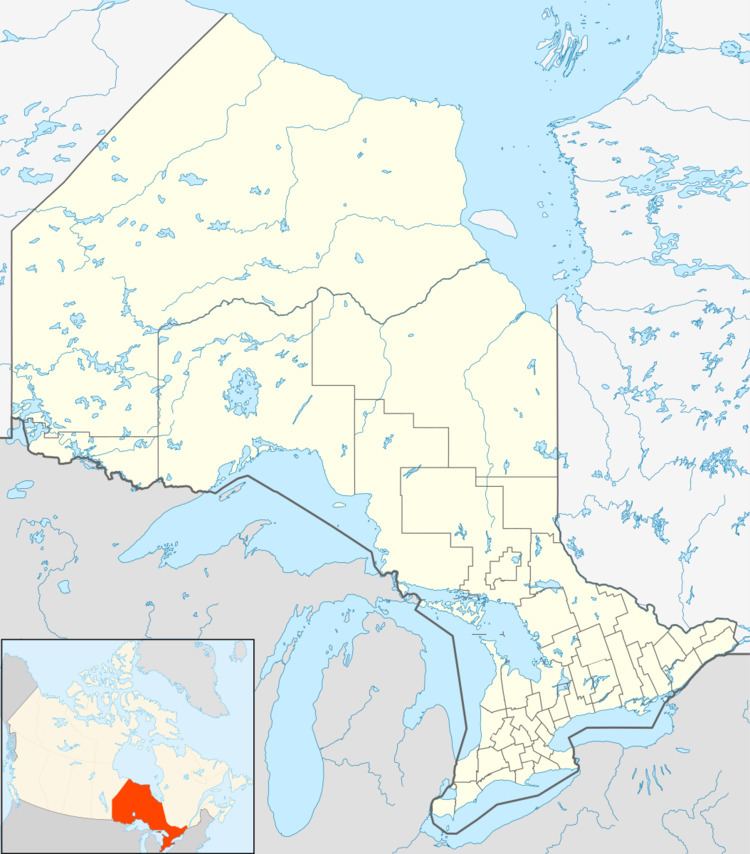Total length 252 m Width 37 m Bridge type Cable-stayed bridge | No. of spans 2 Height 75 m Location Nipigon Province Ontario | |
 | ||
Address 403 ON-11, Nipigon, ON P0T, Canada Similar Kaministiquia River, Tacoma Narrows Bridge, Port Mann Bridge, New Tappan Zee Bridge, Champlain Bridge | ||
Pdi nipigon river bridge hd
The Nipigon River Bridge is a cable-stayed bridge carrying Ontario Highway 11 and Ontario Highway 17, designated as part of the Trans-Canada Highway, across the Nipigon River near Nipigon, Ontario, Canada.
Contents
- Pdi nipigon river bridge hd
- Ontario s nipigon river bridge fails severing trans canada highway
- Closure of new bridge
- References
A steel deck truss road bridge was built at the site in 1937, parallel to an existing Canadian Pacific Railway bridge. In 1974, the original bridge was replaced with a steel plate girder structure.
Among the several points on the Trans-Canada highway with only one crossing, all of which are in north-western Ontario, the two-lane Nipigon River Bridge was the longest.
A $106 million project to replace the bridge with two parallel spans carrying 4 total lanes began in 2013 as part of a region-wide project to widen the Trans-Canada Highway to 4 lanes; the cable-stayed designs for the twin bridges was to be the first of its kind in Ontario. The future westbound bridge opened on November 29, 2015; both directions of traffic were shifted onto the new bridge to prepare the old span for demolition. The eastbound span is scheduled for completion in 2017.
Ontario s nipigon river bridge fails severing trans canada highway
Closure of new bridge
On January 10, 2016, the new bridge was closed to traffic after an expansion joint on the deck was lifted by 60 centimetres (24 in) after a winter storm, resulting in the indefinite closure of the Trans-Canada Highway at the bridge. As the bridge is a single point of failure in Canada's National Highway System, its closure effectively required vehicles travelling between Eastern and Western Canada to detour through the United States. The deputy mayor of Greenstone, located 125 kilometres (78 mi) northeast of the bridge, declared a state of emergency for the municipality as a result of the closure.
The bridge was partially reopened to traffic the following morning after 17 hours of closure, using one lane alternating between directions. The Ministry of Transportation inspected the bridge for further damage and determined that it would be able to handle cars and regular-weight transport trucks in the interim. 200 metric tons (200 long tons; 220 short tons) of concrete jersey barriers were placed to weigh down the deck.
It was estimated that over $100 million of goods per day shipped within Canada by truck were delayed by the bridge closure.
A temporary fix was performed, consisting of a hold-down support system securing the steel girders to the bridge structure with a hanger system. The bridge fully reopened to one lane in each direction on February 25, 2016, despite the exact cause of the failure not being fully known at the time.
Demolition of the old bridge and construction of the second span also resumed in February 2016.
On September 22, 2016, the Ministry of Transportation released several reports on the technical causes of the January 10, 2016 bearing failure. Two reports, from Surface Science Western and National Research Council Canada, were released pertaining solely to the analysis of the failed bolts connecting the bearing to the bridge girders. They both found that the bolts met all required standards and they failed progressively due to severe overloading beyond their capacities. The second component of the analysis involved an engineering evaluation, undertaken by ministry bridge engineers and an independent engineering consultant. They both found that there were 3 main causes for the failure; 1) The shoe plate, which connects the bearing to the girder, was too flexible - creating "prying action" which amplified the forces on some bolts, 2) The bearings could not properly rotate, increasing the load on some bolts, 3) Bolt tightening was not performed, allowing the bolts to be subject to Fatigue (material) stresses. The ministry also revealed that the permanent repair to the bridge would involve a "linkage" system that would hold down the bridge and allow horizontal movements due to thermal expansion and contraction of the bridge superstructure.
